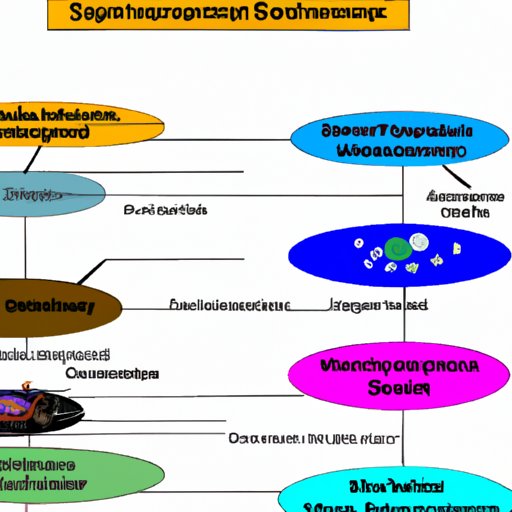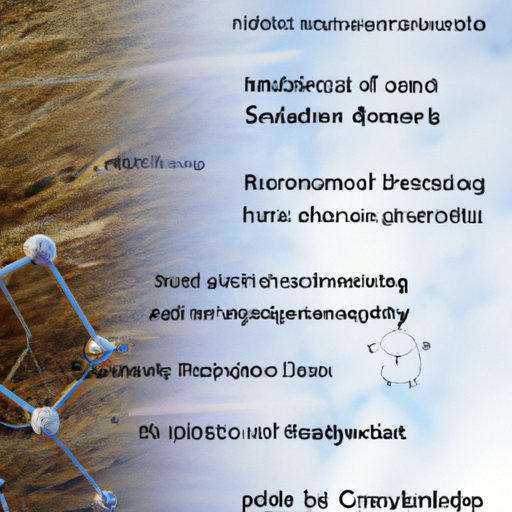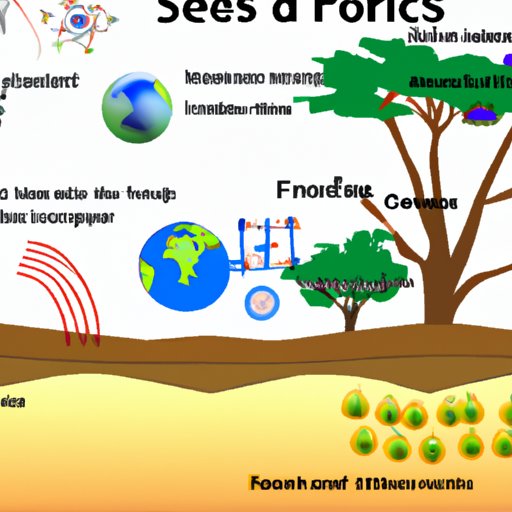Introduction
The study of science is an expansive field, encompassing many diverse areas of research and inquiry. Broadly speaking, science can be divided into two major categories: natural sciences and social sciences. Within each of these categories lies an even broader range of sub-disciplines, specialties, and branches that all contribute to our understanding of the world around us. But what are the fields of science? This article will explore this question in depth, providing a comprehensive overview of the different fields of science, examining their interconnectedness, and unpacking the specialties and sub-fields within.

A Comprehensive Overview of the Different Fields of Science
At its core, science is the systematic study of the physical and natural world through observation, experimentation, and analysis. It is an interdisciplinary endeavor that seeks to uncover the fundamental laws and principles that govern the universe. As such, science is divided into several distinct fields or branches that focus on different aspects of the natural world. These fields include the physical sciences, life sciences, earth sciences, social sciences, and applied sciences.
Physical Sciences
The physical sciences are concerned with the study of matter and energy and their interactions with each other. Examples of physical sciences include physics, chemistry, and astronomy. Physics, for example, is the study of the behavior and properties of matter, energy, and the relationship between them. Chemistry is the study of the composition, structure, and properties of matter, as well as the changes that occur when matter undergoes chemical reactions. Astronomy is the study of the universe and its components, including planets, stars, galaxies, and other celestial bodies.
Life Sciences
The life sciences are concerned with the study of living organisms and their interaction with the environment. Examples of life sciences include biology, ecology, and medicine. Biology is the study of living organisms, from the smallest microorganisms to the largest animals. Ecology is the study of how living organisms interact with each other and their environment. Medicine is the study of diagnosing, preventing, and treating diseases, as well as promoting health and well-being.
Earth Sciences
The earth sciences are concerned with the study of the planet Earth and its various components. Examples of earth sciences include geology, meteorology, and oceanography. Geology is the study of the origin, structure, and composition of the Earth’s lithosphere, hydrosphere, and atmosphere. Meteorology is the study of the atmosphere and its phenomena, such as clouds, storms, and climate. Oceanography is the study of the oceans and their physical, chemical, and biological properties.
Social Sciences
The social sciences are concerned with the study of human behavior and societies. Examples of social sciences include psychology, sociology, and anthropology. Psychology is the study of the mind, behavior, and mental processes. Sociology is the study of societies, groups, and social interaction. Anthropology is the study of humans, their cultures, and their evolution.
Applied Sciences
Finally, the applied sciences are concerned with the application of scientific knowledge to practical problems. Examples of applied sciences include engineering, technology, and computer science. Engineering is the use of scientific principles to design and develop machines, structures, and other systems. Technology is the application of scientific knowledge to solve practical problems. Computer science is the study of algorithms, data structures, and computing systems.

Exploring the Interconnectedness of Science through its Various Fields
It is important to recognize that the various fields of science are not isolated from one another; rather, there is a complex network of interconnectedness between them. The study of one field can inform the study of another. For example, advances in physics have enabled scientists to better understand the behavior of biological systems. Similarly, advances in biology have enabled scientists to better understand the behavior of physical systems. In addition, cross-disciplinary research has led to the emergence of new fields, such as biophysics and nanotechnology.
Unpacking the Specialties and Sub-fields within Science
Within each of the major fields of science, there are numerous specialties and sub-fields. A specialty field is a narrower focus within a particular field. For example, within the field of biology, there are specialties such as genetics, microbiology, and zoology. Each of these specialties has its own set of sub-fields, such as molecular genetics, microbial physiology, and animal behavior. Understanding the specialties and sub-fields within science can help to further illuminate the interconnectedness between the various fields of science.

An Introduction to the Broad Disciplines in Science
In addition to the major fields of science, there are several broad disciplines that encompass multiple fields. These disciplines include physics, chemistry, biology, astronomy, geology, psychology, sociology, and anthropology. Physics is the study of matter, energy, and their interactions. Chemistry is the study of the composition, structure, and properties of matter. Biology is the study of living organisms. Astronomy is the study of the universe and its components. Geology is the study of the Earth and its components. Psychology is the study of the mind, behavior, and mental processes. Sociology is the study of societies, groups, and social interaction. Anthropology is the study of humans, their cultures, and their evolution.
Examining the Varied Branches of Science and Their Impact on Society
Science plays an important role in shaping our cultural, political, and economic landscape. It enables us to better understand the world around us, and it provides us with the tools and knowledge to make informed decisions about how we live and interact with each other. Science also has a profound influence on everyday life, from the food we eat, to the medicines we take, to the technologies we rely on. Through its varied branches, science helps to shape the way we view and interact with the world.
Conclusion
In conclusion, this article has explored what are fields of science. It has provided a comprehensive overview of the different fields of science, examining their interconnectedness and the role they play in shaping our cultural, political, and economic landscape. It has also unpacked the specialties and sub-fields within science, providing an introduction to the broad disciplines in science and analyzing the varied branches of science and their impact on society. By understanding the breadth and complexity of the fields of science, we can gain a deeper appreciation for the power of science and its ability to shape our understanding of the world.
(Note: Is this article not meeting your expectations? Do you have knowledge or insights to share? Unlock new opportunities and expand your reach by joining our authors team. Click Registration to join us and share your expertise with our readers.)
